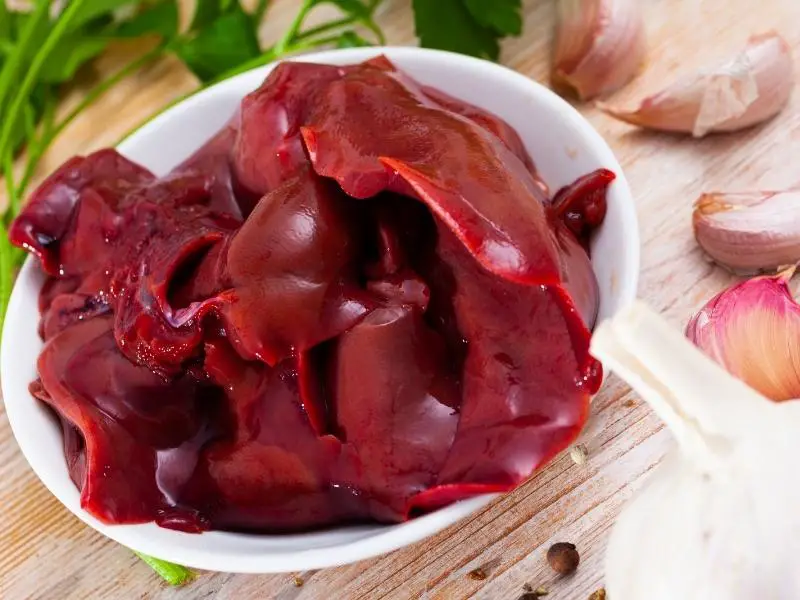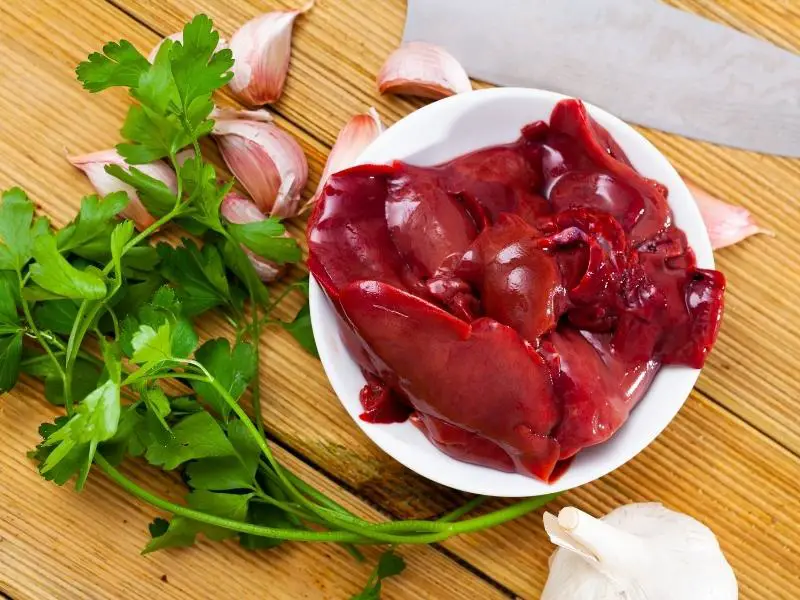If you are a homesteader and want to use a rabbit from nose tip to tail, you may wonder if you can eat rabbit liver. The same question comes up if you hunt rabbits, and whether rabbit liver is safe to eat may also be a cause for concern.
You can eat rabbit liver, especially if the organ meat is obtained from a reputable rabbit breeder or butcher. Rabbit liver has a delicate gamey flavor. If you hunt wild rabbits, you want to make sure the rabbit doesn’t have rabbit fever (or tularemia), which makes the liver unsafe to eat.
If you don’t like liver, rabbit liver is said to be the liver haters liver because of how it tastes. Ready to be convinced?
Here’s everything you need to know about rabbit liver and when it isn’t safe to consume.
What Does Rabbit Liver Taste Like?
The liver of a rabbit has a gamey, yet delicate and mild flavor. When compared to the taste of chicken liver, it is wilder in taste.
A rabbit’s liver is bigger than the liver of a chicken. In fact, it’s about three to four times larger.
Before you cook the liver, make sure you carefully remove the gallbladder without it rupturing. You can cut it out or grab the white thread attached to the gallbladder and pull it down firmly. If the gallbladder breaks, the taste of the liver will be ruined.
Rabbit livers are generally used on their own in recipes, but sometimes, it’s cooked with the rabbit’s kidneys.
How Can You Eat Rabbit Liver?
The easiest is to make a paté from the rabbit liver:
- Salt the liver.
- In a hot pan, add some butter (1 tablespoon) and sear the liver.
- Add 1 more tablespoon of butter, garlic (1 minced clove), and shallots (2-3 tablespoons).
- When the butter is melted and the shallots are soft, caramelized, and transparent, pour some sherry, cognac, or port (2-3 tablespoons).
- Take the pan off the heat and let the ingredients cool.
- Chop everything up finely on a chopping board.
- With a bench scraper, mash the mix into a paté-like consistency. Alternatively, use a stick blender and a bowl.
- Add salt and pepper to taste.
- Serve on toast with mustard.
Aside from patè, you can also use rabbit liver in these ways:
- Grill rabbit liver
- Fry the liver and serve with eggs, potatoes, lettuce, tomatoes, grated hard cheese, and a lemon juice and olive oil seasoning
- Rabbit pot pie
- Coconut rabbit curry
- Rabbit liver and kidney skewers
- Pan-fried with rabbit kidneys and onion, and served with a mustard sauce
- Rabbit stew
Is It Safe to Eat Rabbit Liver?
It is generally safe to eat rabbit liver.
You don’t need to worry if you buy your rabbit liver from reputable sources. These butchers and shops usually only buy high-quality rabbit meat and organ meat.
If you are raising rabbits yourself, you know in what conditions your animals are living, thus removing any cause for concern.
When out hunting wild rabbits or hares, however, you do need to be extra careful. Once you’ve field dressed the rabbit, check the rabbit for signs of tularemia or rabbit fever.
If the rabbit’s liver and kidneys are enlarged and/or you see white or yellow lesions on these organs, it’s best to discard the rabbit.
Tularemia can be passed on to people, and this disease is deadly if you don’t get help as soon as possible once you are exposed to or have contracted tularemia.
Benefits of Eating Rabbit Liver

There are various benefits you can gain when you include rabbit liver in your diet.
Eating rabbit liver is healthy and usually recommended for patients suffering from chronic diseases where the endocrine system, heart, and gastrointestinal tract are affected.
If you suffer from anemia, the high iron content in rabbit livers will be beneficial.
Rabbit liver is low-calorie. There are only 170 calories for 100 grams (3.5 ounces) of rabbit liver. It primarily contains protein (28 grams per 3.5-ounce serving), and it’s rich in minerals and vitamins.
The minerals and vitamins in rabbits are:
- Various vitamins in the B group (vitamin B6 and B12 specifically) help your body at a cellular level
- Vitamin A
- Vitamin C
- Iron
- Magnesium
- Selenium
- Potassium
- Calcium
- Manganese
- Phosphorus
- Sodium
- Omega-3 and 6 fatty acids
Risks of Eating Rabbit Liver
The main risk for eating rabbit liver is when the rabbit is sick with tularemia.
However, the other risk is related to over-eating rabbit liver. Like with all things, rabbit organ meat should be enjoyed in moderation.
Eating too much rabbit liver results in headaches and digestive upsets.
What Other Parts of a Rabbit Are Edible?
Various other parts of a rabbit are edible.
You can eat all the meat a rabbit has to offer, including the internal organs.
Enjoy rabbit kidneys, which are flavorful and mild. You can grill, braise, pan-fry, or sautee the kidneys, make a terrine with them, or use them in a sausage stuffing.
The heart of a rabbit is also edible. However, this is a muscle, so it’s chewier in comparison to other rabbit offal.
It’s recommended to not overcook the heart, which helps prevent it from being chewier than it normally is.
My Last Bunny Thoughts
Eating rabbit meat, including the organs like the liver, is healthy, but only in moderation. As part of a balanced diet, eating the liver adds healthy vitamins and minerals your body needs.
These essential vitamins and minerals include vitamins B6, B12, A, and C, selenium, phosphorus, magnesium, sodium, potassium, and iron. Rabbit liver is also high in protein and low in carbs, making it the perfect addition to your meal.
If you suffer from any chronic conditions were eating rabbit liver comes with benefits – like the high iron content for those with anemia – chat with your healthcare professional about quantities and what’s the best way to prepare this delicacy.
While eating rabbit liver is healthy, ensure you source it from reputable suppliers. When hunting, check the liver and kidney for signs of rabbit fever and other abnormalities before you cook it.


